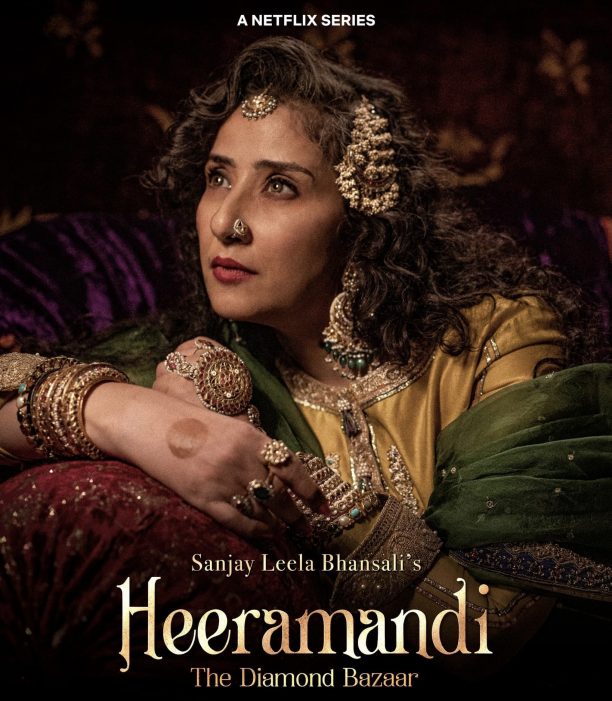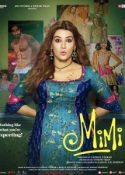 Heeramandi: The Diamond Bazaar
Heeramandi: The Diamond Bazaar
Sanjay Leela Bhansali’s Heeramandi, now on Netflix in eight episodes is everything that Bhansali has come to be associated with, then some more. It is a feast for the eyes and soul with a gallery of female actors giving their best to every shot. At times the best of these actresses is not good enough. One of the lead actresses pretending to be drunken dancing is ludicrously caricatural. But then there is Aditi Rao Hydari looking every inch the ethereal kothewali, a distant cousin to Rekha in Umrao Jaan. And Shruti Sharma as ill-fated-in-love Saima makes her space. I must also mention Jayati Bhatia as Manisha Koirala’s faithful woman-Friday. Even when in the background she makes her presence felt.
Bhansali’s vision and execution are impeccable so much so that you wonder what this kotha classic would look like on the big screen.
On the small screen it throbs with magnetic opulence. The women in their heavy costumes and jewellery tiptoe through the tumult of the times and the blood-soaked dancefloor never allowing their ghungroo to be a slave to destiny. But the men are mostly hazy and undersketched with little to do except serve as pawns and villains in the feminine milieu.
I came away from the eight episodes of Heeramandi refurbished and energized. And yes, reassured. As long as there is Sanjay Leela Bhansali there is hope for our cinema. This mastercreator is not only the future of Indian cinema, but also its past and present.
His luminous legacy in Heeramandi subsumes such cinematic stalwarts as K Asif and Kamal Amrohi. The entire landscape of the Kotha with girls dancing the Mujra in miniature balconies, comes from Pakeezah; towards the end the beautiful Aditi Rao Hyder is seen in chains, like Madhubala in Asif’s Mughal-e-Azam.
The world he creates in Heeramandi tragic and luminous. Every tawaif (to call them by the ‘p’ word is akin to calling Beethoven a tunesmith or Lata Mangeshkar a singer) is a living hurting entity , a beautiful dream trapped in a picturesque nightmare.
Some of the actresses are not as beautiful or articulate as the characters they play. The chasm between the ideal and the real is effortlessly negotiated by Bhansali’s epic vision. We are led to look, not at the actresses, but the characters they play.

But Manisha Koirala is a revelation. As the inebriated captain of the magnificent kotha, she has the toughest role. She is at once vitiating and nurturing, evil and compassionate.Manisha sinks her teeth into a part that is at once challenging and intricate. Destructive and altruistic, Manisha’s Mallikajaan is something we have never seen before.
There are several gorgeous moments in the storytelling where matter merges with chatter: even the lighthearted gossipy interludes with the ladies of the Kotha are richly rewarding. You won’t come away from Heeramandi with a single shot in the dark. Each frame speaks to us. Every costume, each piece of jewellery has a story to tell.
While the heart of the series beats in accentuated grace, visually Heeramandi is next to none. The four cinematographers Sudeep Chatterjee, Mahesh Limaye, Huenstang Mohpatra, and Ragul Dharuman work in harmony to create an ambience of seamless ceaseless splendour.
At its core Heeramandi is a love story about a young sexually unviolated daughter of a tawaif Alamzeb (Sharmin Segal, fresh, innocent, heartbreaking) and her doomed love for an aristocratic Romeo, Tajdar, played by Taha Shah Badussha who is the only male actor who leaves any impression.
Make no mistake: Heeramandi is a celebration of womanhood in all its glory. The power-drunk men are empowered pawns, and who knows this better than the transgender Ustad (Indresh Malik) whose special gender status gives him a unique insight into the gender dynamics of a enchained India struggling to get her independence.
Heeramandi is about freedom, or the lack of it. It is also about honour, pride, sacrifice and passion: occasionally these volatile emotions are projected all at once. To enter and inhabit the unique resplendent realm of Sanjay Leela Bhansali is to have experienced the highest aesthetic gratification that cinema can afford.
Any downside? Yes, why is this acme of aestheticism on the small screen? It’s like Mallikajaan descending from her Kotha to go to the rogue British cop Alistair Cartright (Jason Shah) in his thana. That said , Heeramandi is an experience that words cannot do justice to. It is further proof that when it comes to the complete movie experience, there is no filmmaker like Sanjay Leela Bhansali. Watch Heeramandi one episode at a time. That is all your aesthetic space can take.










